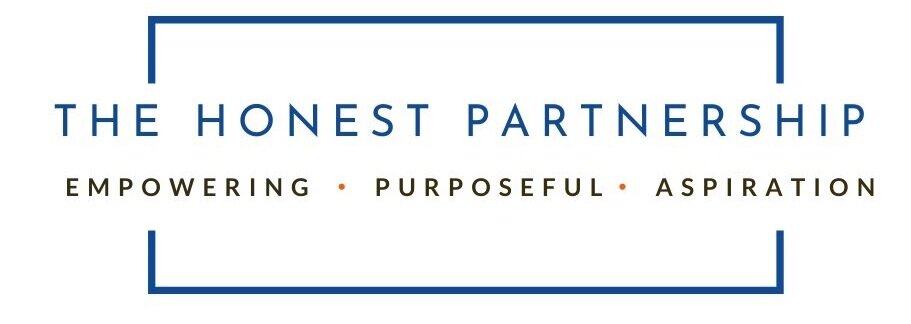
Module 7: Maintaining and Respecting Your Boundaries
The difficulty with boundaries maintaining them without a plan
Boundaries: A combination of radical compassion for yourself & others
The Invisible Line
Setting boundaries will likely give you an immediate sense of empowerment, but "holding your line" and maintaining them can be hard, especially if others are used to you not doing so.
tAke responsiliy
Setting boundaries will likely give you an immediate sense of empowerment, but "holding your line" and maintaining them can be hard, especially if others are used to you not doing so.
What Now?
ake responsibility for your thoughts only
1. Take responsibility for your thoughts only
When you start to set personal boundaries, you might not agree with everyone in your life – but that’s OK. You can only be responsible for your thoughts and feelings, not those of other people. Let other people think and feel what they wish – you do you. Sometimes, this is about agreeing to disagree, and moving
Realistic: To maintain a clear sense of what you will and will not accept, but be realistic
Adaptable: Resist seeing boundaries as set in stone. Be open to resetting boundaries to suit your situation, be flexible relating to rethink how you can gain some boundaries.
Clam: When your boundaries are under threat, look out for the negative emotions that you associate with the situation and work to control them, while calmly reasserting those boundaries.
Consequences
Consequences: If you need to challenge a co-worker who is breaching your boundaries, you can use a tool like the
The big stuff is there at times will need to be consequences for those situations that crossed the line too many times. It is bound to happen as we are human and fallible, but that doesn't mean you have to sacrifice yourself others flaws. It will be difficult to think of what the consequences should be once it does. You’ll be biased by the person, the context, and a myriad other factors. So decide from the get-go what it could be: it could be lessening contact, restricting air time. What needs to be considered here is compassionate and respect for yourself and the other is needed as well as firmness as to what the outcome will be.
> Pause moment: Pause Moment:Lets thinking about what strong boundaries could mean to you, it is having an inner know of what you like, what you accept and what you can tolerate. Knowing what behaviours are absolute deal breakers for you in each area of your life. It also means being able to communicate in some way so others get what you value, your beliefs, and your desires and also limits. It means standing your ground when someone upsets you or crosses your boundary. It means protecting what you deem important. Its totally personal to you.
Guidelines for Personal Responsibilities of Personal boundaries
I am ultimately responsible for I allow in my life or what relationships I choose to leave behind
I am responsibility for or my own behaviour within relationships including my actions and language (especially when in high pressure situations)
I take responsibility to respect the boundaries and feelings of others.
I agree to honour my commitments, and on the occasions when I am unable, I will communicate this.
I agree to involve others in decision making and to consider their preferences as valid.
Guidelines ForPersonal boundaries
xxx
Experience Boundaries
This is a powerful exersize, tXXXX
Please note: If these statements resonated, its not a criticism it is a moment of awareness; ’i’ve experienced that and it didn't sit well with me. I am building my skills to make a different choice next time.
Aim: Build a working knowledge of unhealthy boundary encounters
Why: Awareness creates an opportunity to make a choice / a different type of decision
How: Identify situations where someone may have crossed your boundaries. Please select the ones that apply to you, and use the ‘Notes’ section to
What you need: Pen & paper
Time: 20 mins
Please note: If these statements resonated, its not a criticism it is a moment of awareness; ’i’ve experienced that and it didn't sit well with me. I am building my skills to make a different choice next time.
Here’s How…
Phase 1 - 5 minutes
Once you have your materials, you have a space to undertake your boundary challenge you are set
Sharing too much too soon or, at the other end of the spectrum, closing yourself off and not expressing your need and wants.
To Finish Up
What have you learnt from this exercise that has surprised you
How will this help you in the future
How would life be different with having personal boundaries in place?
Who else would benefit from personal boundaries being in place
How will you know you have achieved your first boundary?
How confident are you in setting this boundary? Can you give it a score: scale: 1 low - 10 super high
What or who could get in the way?
Why is this important to you? This message is a something to remind yourself when facing a challenge that gets in the way of creating personal boundaries of why somethings have to change. Remember what you wrote before?
Let’s recap
Setting boundaries at work doesn’t mean you have an attitude, you’re looking to work less than your fair share, or are less ambitious than your coworkers. It’s about self-care for mental wellness, mutual respect, and clear-cut communications.
Boundaries can help prevent workplace burnout and might help you be more productive in the long run.
Learning how to set boundaries, however, and being comfortable doing so, isn’t always easy. You may be worried you won’t get a promotion, or you might associate your self-worth with job accomplishments.
Sometimes it’s just uncomfortable to say no to people.
The good news is, you can learn to set boundaries without being confrontational, and you can reinforce those boundaries subtly and mindfully.

FEELING BOUNDARIES CHALLENGE
Having awareness of an unhealthy boundary is the first step in really establishing healthier boundaries. This is an activity to draw your attention to unhealthy boundary moments we are our uncovering limits, those moments where it just want right.


